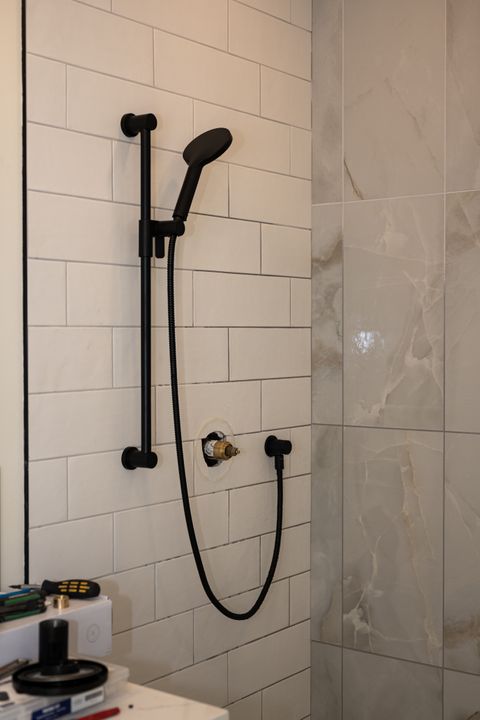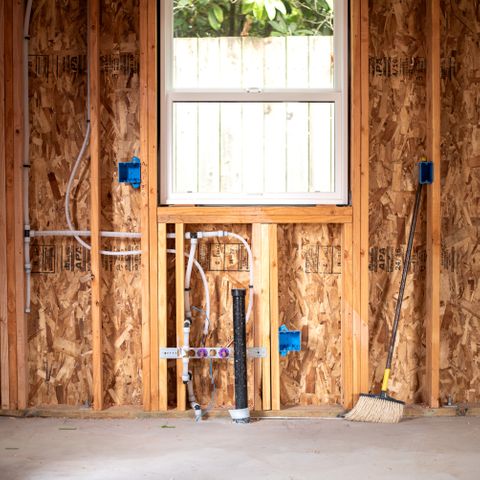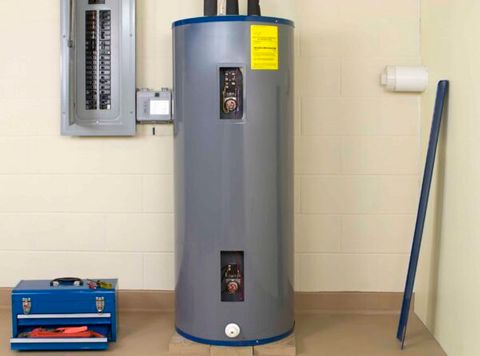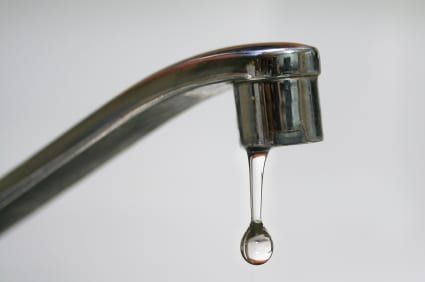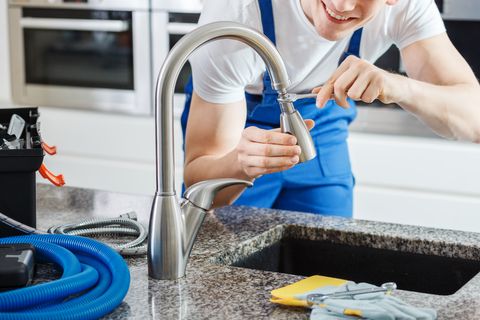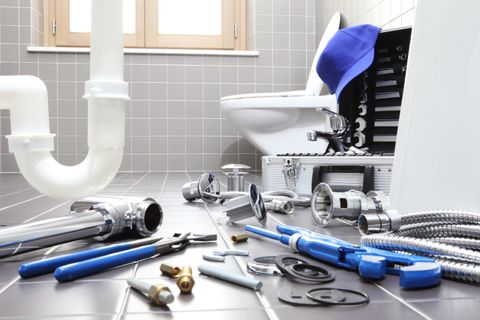Blog Posts
5 Common Plumbing Problems in Seattle and How to Fix Them
Knockout Plumbing Team
5 Common Plumbing Problems in Seattle (and How to Fix Them)
Seattle’s unique climate and older infrastructure can lead to a variety of plumbing challenges for homeowners. Here are five common issues—and how to tackle them before they become costly headaches:
-
Slow or Clogged Drains
Seattle’s frequent rain and older pipe systems can contribute to debris buildup in drains. Regular drain cleaning or a quick snaking can keep water flowing smoothly. If you notice repeated clogs, consider hydro jetting for a deep clean.
-
Leaky Pipes and Fixtures
Over time, fluctuating temperatures can cause pipe joints to loosen or crack. If you spot damp spots on walls or ceilings, contact a plumber promptly—small leaks can lead to significant water damage.
-
Water Heater Woes
Whether it’s a traditional tank or tankless system, water heaters in Seattle often work overtime during colder months. If your water isn’t heating properly, check the thermostat or sediment buildup. Annual maintenance can extend the life of your unit.
more
What You Can Expect When You Hire Us
Are you searching for reliable, high-quality plumbing services in Seattle? Look no further! Our plumbing company is dedicated to providing top-notch service to Seattle residents, ensuring your home’s plumbing system operates flawlessly. From emergency repairs to routine maintenance and installations, we have the expertise and commitment to meet all your plumbing needs. Here’s why you should choose us as your go-to plumbing service provider in Seattle.
1. Experienced and Certified Plumbers
Our team consists of highly experienced and certified plumbers who are well-versed in handling a wide range of plumbing issues. Whether it’s a minor leak or a major installation project, our Seattle plumbers have the skills and knowledge to get the job done right the first time. We stay updated with the latest industry standards and techniques to provide you with the best service possible.
2. Comprehensive Plumbing Services
We offer a full spectrum of plumbing services to address all your needs. Our services include:
- Emergency Plumbing: Available 24/7 for urgent issues such as burst pipes, severe leaks, and other emergencies.
- Drain Cleaning: Efficient removal of clogs and blockages to ensure smooth water flow.
- Water Heater Services: Installation, repair, and maintenance of traditional and tankless water heaters.
- Sewer Line Repair and Replacement: Professional handling of sewer line issues to prevent serious damage.
- Fixture Installation and Repair: Expert installation and repair of faucets, sinks, toilets, and other fixtures.
- Leak Detection and Repair: Advanced methods to detect and fix leaks, saving you money on water bills.
Is the Navien 240A-2 The Best Tankless System?
Knockout Plumbing
When it comes to choosing a tankless water heater, the Navien 240A-2 stands out as a top contender. As experienced plumbers who always strive for top quality, it is the brand we stand by and recommend. Known for its efficiency, reliability, and advanced features, this model is an excellent choice for any home. Here’s why we highly recommend the Navien 240A-2 for your tankless water heater needs.
1. High Efficiency and Energy Savings
The Navien 240A-2 is designed with energy efficiency in mind. It boasts a Uniform Energy Factor (UEF) of 0.96, which means it converts nearly all the fuel it uses into hot water. This high efficiency translates to significant energy savings over time, reducing your utility bills and making it an environmentally friendly choice.
2. Advanced Technology
This model features Navien’s Advanced ComfortFlow® technology, which incorporates a built-in recirculation pump and buffer tank. These components work together to reduce the “cold water sandwich” effect, where cold water intermittently flows before the hot water arrives. The result is consistent and immediate hot water delivery, enhancing your comfort and convenience.
moreWhy Upgrading to a Tankless Water Heater is the Best Decision You'll Ever Make
Knockout Plumbing
When it comes to home improvements, upgrading your hot water heater might not be at the top of your list. However, making the switch to a tankless water heater can offer a multitude of benefits that can significantly enhance your daily living experience, save you money, and help the environment. Here’s why a tankless system is the best option for your home.
1. Endless Hot Water Supply
One of the most appealing benefits of a tankless water heater is its ability to provide an endless supply of hot water. Unlike traditional tank water heaters that store a limited amount of hot water, tankless systems heat water on demand. This means you’ll never run out of hot water, even if you have multiple showers running simultaneously, or if you’re doing laundry while the dishwasher is on.
2. Energy Efficiency
Tankless water heaters are more energy-efficient than their traditional counterparts. According to the U.S. Department of Energy, tankless heaters can be 24-34% more energy-efficient for homes that use 41 gallons or less of hot water daily. For homes using more hot water (around 86 gallons per day), they can be 8-14% more efficient. This increase in efficiency translates to lower energy bills, as you're not continuously heating a large tank of water that isn't always in use.
moreUnderstanding the Different Types of Pipes in Your Home
Pipes form the circulatory system of your home, quietly carrying water and gas to where they are needed most. Understanding the different types of pipes in your home can be invaluable, as it allows you to make informed decisions about maintenance and repairs. Let's take a closer look at the various materials used for residential plumbing.
1. Copper Pipes
Copper pipes have long been the gold standard in plumbing. Their durability, resistance to corrosion, and ability to withstand high pressure make them a popular choice. While they can be pricier upfront, the longevity of copper pipes often justifies the investment.
2. PVC (Polyvinyl Chloride) Pipes
PVC pipes are widely used for both water supply and drainage systems. They are lightweight, easy to install, and resistant to corrosion and chemicals. Their affordability makes them a common choice for residential plumbing projects.
3. PEX (Cross-Linked Polyethylene) Pipes
PEX pipes have gained popularity in recent years due to their flexibility and versatility. They are resistant to freezing and can be installed in long runs without the need for multiple connections. This reduces the risk of leaks and ensures efficient water flow.
moreChoosing the Right Water Heater for Your Home
Selecting the right water heater is a crucial decision that can significantly impact your household's comfort and energy efficiency. With various types and models available, it's important to consider your specific needs and preferences. In this guide, we'll walk you through the key factors to consider when choosing a water heater for your home.
1. Types of Water Heaters
a. Tank Water Heaters. Tank water heaters store and heat a specific amount of water in a tank. They are available in various sizes and are a good choice for households with consistent hot water demands.
b. Tankless Water Heaters. Tankless, or on-demand, water heaters heat water as it flows through the unit, providing a continuous supply of hot water. They are energy-efficient and ideal for homes with limited space or varying hot water needs.
c. Heat Pump Water Heaters. Heat pump water heaters use electricity to move heat from the air or ground to heat water. They are highly energy-efficient and work well in moderate climates.
d. Solar Water Heaters. Solar water heaters harness energy from the sun to heat water. They are environmentally-friendly and can provide substantial energy savings over time.
moreCommon Plumbing Issues and How to Fix Them
Your plumbing system is the unsung hero of your home, tirelessly working behind the scenes to ensure clean water flows in and waste flows out. However, like any other system, it can encounter issues from time to time. Here are some of the most common plumbing problems homeowners face, along with practical solutions to address them.
1. Leaky Faucets
A dripping faucet isn't just annoying; it can waste a significant amount of water over time. The most likely culprit is a worn-out washer or O-ring. To fix it, turn off the water supply, disassemble the faucet, and replace the damaged parts.
2. Clogged Drains
Clogged drains are a prevalent headache. They can result from a buildup of hair, soap scum, grease, or foreign objects. For minor clogs, a plunger can often do the trick. For tougher ones, consider using a drain snake or an eco-friendly drain cleaning solution.
3. Running Toilets
A toilet that keeps running long after it's been flushed can waste a considerable amount of water. Often, this is due to a faulty flapper or a worn-out fill valve. Replacing these components is a relatively simple and cost-effective fix.
4. Low Water Pressure
Low water pressure can be caused by mineral buildup in pipes, a partially closed shut-off valve, or a malfunctioning pressure regulator. Cleaning or replacing affected components can help restore adequate water pressure.
more10 Easy Ways to Unlock Drains
There are so many methods to unclog a drain, but it’s not always clear which method is appropriate for your home’s plumbing. As a rule of thumb, it’s always best to start out with the most gentle solutions to avoid damaging your pipes before moving on to more aggressive measures
Here are 10 easy DIY methods to unclog a drain in your home!
1. To Unclog a Sink – Use a Bent Wire Hanger
Hair, skin, dirt, and food particles can easily clog your drains as they bind to the soap scum that accumulates on your drain pipe walls. Over time, this can slow down water flow.
A simple hanger can effectively unclog a blocked sink. Take a regular coat hanger, straighten it out, and create a small hook shape at one end of the wire. Push this end slowly down the plughole and begin to “fish.” Avoid pushing the hanger downwards, as this can move the blockage further down the drain. Instead, use gentle “prodding” and “hooking” motions to help dislodge and remove the gunk that’s clogging your drain.
2. For Shower and Toilet Drains – Dish Detergent
Shower drains easily clog with hair. With toilets, it’s usually poop, excess toilet paper, wipes, female sanitary products or cotton wool balls (always toss anything that’s not toilet paper in the trash!).
moreAvoid Putting These In Your Kitchen Drain
Your kitchen drain has been moving pretty slowly lately, but now it’s totally clogged! Because the kitchen is one of the most popular rooms in any home, its plugged-up drain is a huge inconvenience.
When your kitchen drain is clogged, count on Knockout Plumbing & Mechanical to get it back running smoothly. We know all about the nuisances and frustration that come with a clogged kitchen drain. Knockout Plumbing & Mechanical’s drain specialists—and, in fact, all of our employees!—are excellent at their jobs. If you live in or near Seattle, don’t wait to call on us for top-notch customer service and satisfaction!
Vegetables and fruits are good for your health, but some of them are disasters for your sink, especially if it includes a garbage disposal. Stringy fibers from celery, asparagus and pineapple can easily wrap around the blades and bring it to a standstill. Things such as nuts, seeds and corn also aren’t a sink’s friend.
The blades of your garbage disposal may be sharp, but they can’t handle chicken, beef or lamb bones. They may even break the blades! Fish bones are a different story. They’re small and fragile enough for the garbage disposal.
moreKeep Your Toilet Working Smoothly
Toilets. Everyone needs and uses them, especially while at home. Think of the panic that would ensue if your home’s toilet(s) suddenly became unusable. Oh, the horror! Seriously!
When you have a toilet that’s in need—dire or not—of service, don’t hesitate to call Knockout Plumbing & Mechanical. One of our meticulous and skilled plumbers will do whatever it takes to fix your commode quickly and efficiently. We provide excellent service and pride ourselves on the quality of our work in Seattle and its outlying area.
These are the eight main reasons why toilets get clogged. You can prevent some of them from happening in your home.
You use too much toilet paper. The overabundance leads to clogged and overstuffed plumbing lines.
There’s something trapped in the drain line in a toilet on a floor above yours. A plumber might need to investigate the problem by snaking a camera through the upstairs commode’s drain.
The toilet tank doesn’t have enough water in it to propel the contents through the sewer line.
A recent home renovation had a negative impact on your toilet’s drain pipes.
An object unsuitable for a toilet is hindering the water from flowing through the pipes. If you have a young child, you’re probably familiar with this scenario. Adults are also guilty as charged when they toss inappropriate items—plastic bags, wipes, paper towels, etc.—into the loo.
more


